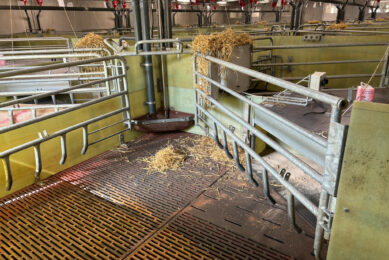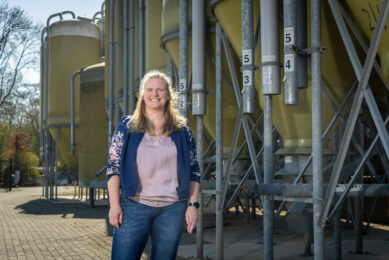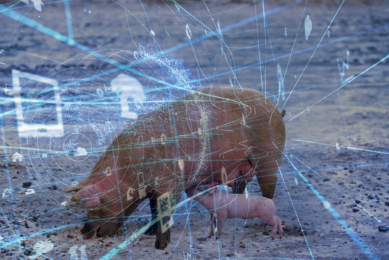Prop 12 is coming, but at what cost?

One of the most common phrases heard at the 2023 edition of the World Pork Expo, without any doubt, was Proposition 12 – the ballot initiative in California mandating how sows will have to be housed by producers who want to sell whole pork in California. What do the changes mean in practice for America’s sows?
Asked if this regulation will be catastrophic for the US pork industry, Michael Formica, US National Pork Producers Council chief legal strategist, replied: “Well, it’s catastrophic for farmers in Iowa and also for consumers in California!”

In May 2023, the US Supreme Court ruled in a 5-4 decision to uphold California Proposition 12, ending a legal challenge by pork producers and requiring uncooked cuts of whole pork meat, like ribs and bacon, to meet requirements from July 2023. Cooked, ground or otherwise comminuted pork is exempt from these rules. As the state counts for roughly 15-16% of US pork consumption, the effects will have a profound effect on pig production in the US, Canada and even to a certain degree in Mexico.
Prop 12 was set in motion at a ballot proposition in November 2018. The measure was passed with 63% voting “yes” for the Prevention of Cruelty to Farm Animals Act, also known as Proposition 12 (or Prop 12).
Dr Steve Meyer is an agricultural economist at Kerns and Associates. At the World Pork Expo 2023, he summarised the Act as follows: “What they say in Prop 12 specifically is that each sow:
- Should be able to stand up
- Extend her legs
- Turn around
- Have 24 square feet (2.2 m2) at her disposal.
“She can be confined 5 days prior to farrowing until the day she has weaned her pigs. So Prop 12 will not have an impact on lactation. There’s no limit to when the sow needs to be weaned, which can be at 3, 4 or 5 weeks; that is all fine. As long as the piglets are with her, there’s no problem.”
Gestation
The other 2 components of the sow cycle, however, are seriously affected. Obviously, the California legislation has a strong impact on how sows are kept during gestation. In the European Union, group housing during gestation has been mandatory since 2013. In the US, producers use individual gestation stalls for varying periods of time, and roughly 30-35% of producers have converted to using group housing systems. These producers are mostly integrated farm complexes or those supplying to large food chains such as McDonald’s. In neighbouring Canada, that amount is higher at roughly 55%.
Most group housing systems in the US will not meet the space requirements under Prop 12 and will need to be converted. This will require additional investment by farmers and means that fewer sows can be housed in each barn.
Breeding
In the insemination phase, changes are profound. Currently, it is common practice to keep sows or gilts in breeding crates for 30 days until confirmed pregnant and the eggs have all been allowed to settle in properly. Not any more under the Prop 12 rules. Meyer explained: “Sows essentially can only be held in a stall for 6 hours maximum, up to altogether a maximum of 24 hours per month, just to perform management duties, like insemination, vaccination, you name it. So no more 30-day periods in breeding crates – just 24 hours.”

Essentially, this change means that on many farms wanting to continue to be eligible to send pork to California, the artificial insemination or breeding zones will have to be redesigned.
Other states
One complicating factor in the total discussion about Prop 12 is that not only California introduced this type of legislation; but so did the east coast state of Massachusetts in 2016. The state’s “Question 3” is roughly the same, yet implementation awaited the Supreme Court’s opinion on Prop 12. But, 2 things differ, said Meyer: “In Massachusetts, there is no spacing included. And in a way they even go further as they also don’t allow transport over land, so pork intended for the states of Maine, Vermont or New Hampshire [located east of Massachusetts] will also suffer.” Michael Formica adds: “This means pork products shipping through Massachusetts for distribution in other states must meet Question 3 requirements.”
Other states may follow with similar legislation. During the World Pork Expo, Oregon, Washington and New York were mentioned as states where similar initiatives may be implemented. That again could lead to patchwork legislation, with each state implementing slightly different rules, making it extremely difficult for producers to comply with everything.
Wouldn’t it be better for federal regulations to be implemented, so at least there’s clarity? Meyer said, “That is one of the recommendations the Supreme Court has given back to the House of Representatives.”
Effects on the economy
In the short term, however, Meyer expects that the pig industry will suffer from the blow. “It is going to be difficult for the next 2-3 years, as demand will drop to pre-2021 levels. The market will have to adapt to the new situation,” he said.
As some pork will no longer be able to be sold in California, it will have to find its way to other markets in the US, leading to an oversupply outside California. “The price of pork will have to drop 10-15% cutoff value per hundredweight, and prices are already low,” he noted.
In the meantime, consumers will choose something else – most likely chicken – as this commodity will not be affected by the Prop 12 regulations. Veal calves, on the other hand, are also impacted by Prop 12, so there’s likely going to be an impact on the availability of beef in California, too.
Canada and Mexico
It’s not just inside the US that the situation is being frowned upon. The effects will be felt in pig industries north and south of the US borders. In Canada, many weaner pigs are bred and shipped south across the border for finishing. Producers in that cycle will also have to comply if the meat is intended for the Californian market.
In Mexico, the industry is also not happy. As the US is a net exporter of pork products to Mexico, not a lot of pork is shipped north, but it does happen, says Formica. “There’s a strong Hispanic community in California and they like to be able to purchase stuff they know. So those products will come from Mexico,” he explained.
But at the moment, there’s a question about whether it will be possible for them – and other Californians – to even purchase pork. Empty shelves are likely to be expected, and scarcity leads to price rises.











